In this next installment of our series examining religious and spiritual symbology and associated natural and human-made items of spiritual association, we’re going to look at Sigils, Runes, Gnosticism, Kabbalism as well as look at perhaps the most esoteric icons of all – symbology with lost meanings, from the prehistoric era.
The difference between many, if not most religious symbols – such as the Star of David to those of the Jewish faith, or the Moon and Crescent of Islam, or the Christian Cross or Catholic Crucifix and those of many non-Abrahamic faiths depends upon each individuals perspective.
For those with a very secular perspective, the difference may be minimal – if at all. For those looking at these symbols from within their own faith, the differences can be monumental. Of course, the same could also be said from any religious perspective about any other.
It is for this reason, we’re going to sidestep the very long-discussion about differences and treat each and every symbol equally and address them only from within their own respective cultural context – the way believers see it today – or saw it in the past.
We are going to try to not allow outside perspective to paint any of these things in a negative light or to cast a pal over our own perspective, as it can be highly prejudicial and ultimately, it’s wrong to do – since it violates the sanctity and veneration of these pieces of spiritual artwork and faith by coloring them with an outside perspective.
Sigils – In Context
Sigils are often associated with ceremony, whether in an eastern mainstream sense such as in Buddhism or Hinduism, or in a more esoteric sense such as western esotericism or Kabbalism.
To lend some context to this, many sigils are associated with deities from a litany of faiths and traditions and may represent usage within the context of ritual magic, protection, binding of spirits, warding off of spirits or other esoteric uses. Effigies (or Idols as some may call them) are in a slightly different category as they may often represent physical, three dimensional dolls or idols of the deity in question. Esoterically speaking many effigies represent a kind of temporary home for a spirit or place of mental focus for those wishing to give offering, worship or merely pay homage to.
The word Icon used here is meant similarly to Effigy with the exception that Icons are often more complex painted representations than three dimensional statuary – they are more often painted onto things than made in three dimensional form.
If any of this strikes the reader as a misuse of these terms – you may well be right. In order to discuss a topic these complex concessions have to be made for readerships sake.
In the realm of ancient (and modern) civilizations, magic was (and remains among some) a captivating force that shaps beliefs, rituals, and the very fabric of society. One intriguing aspect of magical practices is the use of sigils, effigies, and icons. These mystical elements hold immense power and are believed by many to unlock hidden forces, grant protection, and connect with the divine.
Unveiling the Power of Sigils
Sigils, often referred to as magical symbols or seals, have a long and fascinating history. These unique marks were created by combining and rearranging letters, symbols, or glyphs to form a visual representation of a desired outcome or intention. The art of sigil magic dates back to ancient civilizations such as Mesopotamia, Egypt, and Greece, where they were used for various purposes, including protection, healing, and divination.
Unlike religious symbols that represent specific deities or concepts, sigils are personal and highly individualistic. Each sigil is uniquely crafted by the practitioner, imbuing it with personal energy and intention. The process of creating a sigil involves focusing on the desired outcome, removing duplicate letters, and combining the remaining ones into a visually appealing symbol. Once the sigil is formed, it is charged with energy through rituals and meditation, amplifying its power.
Effigies Explained
Effigies, on the other hand, are physical representations of a person, object or entity and are often used in magical rituals. They may also be used as a means of sympathetic magic or for protection or invocation. Effigies are often crafted with great care and attention to detail, aiming to establish a connection between the physical representation and the target of the entity – whether for protection, spell or ritual purposes.
Effigies were commonly used for both benevolent and malevolent purposes.
In some traditions effigies are very important for medical purposes. In healing rituals, they were believed to transfer ailments or negative energies from the individual to the effigy, allowing for the person’s recovery. Conversely, effigies were also used in curses or revenge spells, where harm inflicted upon the effigy was thought to be inflicted upon the intended target.
Below are some spiritual and religious effigies commonly found in statuary around the world from past to present.
Christian Statue
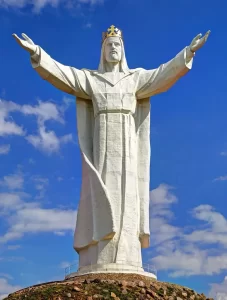
Buddha Statue
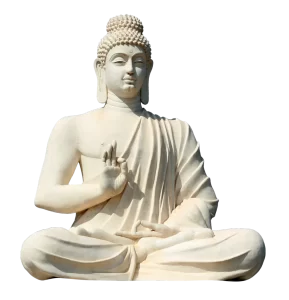
Thoth Engraving (Ancient Egyptian Deity)
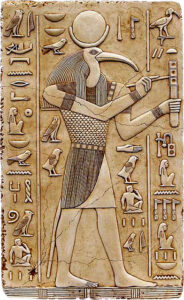
Shiva Statue (Hinduism)

The Enigmatic World of Sigils & Icons
Icons hold a significant place in religious traditions and are revered as sacred symbols representing deities, saints, or spiritual concepts. However, icons can also be found in magical practices, often associated with specific rituals or belief systems. In ancient times, icons were used to establish a connection with the divine, invoke blessings, or seek protection.
The use of icons in magical practices can be traced back to various cultures and civilizations. For example, the ancient Egyptians had a rich tradition of using icons in their magical rituals. The Eye of Horus, an iconic symbol representing protection and healing, was believed to have the power to ward off evil and provide spiritual guidance. Similarly, the Norse civilization used icons known as runes, which were inscribed with specific symbols representing concepts such as strength, wisdom, and protection.
The Difference Between Sigils and Religious Symbols
While sigils, effigies, and icons share a connection to the mystical realm, they differ in their purpose, origin, and usage. Religious symbols are deeply rooted in established belief systems and are widely recognized as representations of divine entities or spiritual concepts. They carry deep cultural and religious significance, serving as a means of worship, devotion, and spiritual connection.
The reason we must differentiate here between Sigils and Religious Symbols is that there is often a very deep association between the two. For example, sigils are often used as a means carrying our ceremonial magic as a practice of those whose faith may be deeply rooted in Judaism, Christianity, Islam, Catholicism, Buddhism, Hinduism or other similar faiths.
Sigils are usually associated with specific dieties including Angels, Demons or even God itself – but that’s not all.
On the other hand, sigils are highly personal and often created by individuals for specific intentions or outcomes. They can also be untethered from any specific belief system, or only loosely associated to a particular religious tradition and can be crafted and used by practitioners from diverse mixed belief systems.
To some, sigils are tools of personal empowerment, allowing individuals to tap into their inner magic and manifest their desires.
The above, of course, is speaking very broadly about something with many interpretations. From a Solomonic perspective, Sigils are often associated with specific demons, spirits, angels and even ethereal forces – which may be nature based, etheric, deistic or hold many different significances.
Below are some examples of sigils:
Archangel Sigil
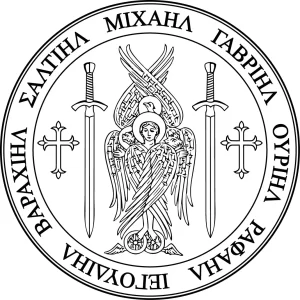
7 Archangels Sigil & Symbols

Unlocking the Secrets of Runes
Within the realm of historical magic, runes hold a special place. Runes are ancient Germanic and Norse symbols that were used as both a writing system, as well as for divination and magical purposes. Each rune has its own distinct meaning and energy, representing concepts such as strength, protection, wisdom, deity, element, energy, force and even life itself – or as many saw it, fertility.
The use of runes in magical practices can be traced back to the ancient Norse civilization, where they were believed to hold immense power and connection to the gods. Runes were often inscribed on objects such as amulets, talismans, or stones, and used in rituals and divination to seek guidance, protection, and insight into the future.
Differences, Similarities or Both?
It can all be a bit confusing, because at the end of the day, Signs, Symbols, Icons, Sigils and even Effigies can all appear – to the outside observer and/or objective viewer – to be of a very similar, dare we say, analogous. This is both completely true and false at the same time – it is, as we have said, a matter of perspective.
Some symbols we find are universal and found across the boundaries of many cultures and all of time. This can can make for some very confusing reading when one delves into the arcane realm of runes, as many resemble letters, numbers or even geometric shapes.
The differences between these things has to be assumed to be within each person’s own respective cultural context. An ancient Roman might have had an entirely different cosmology, culture and belief system than those from the high Renaissance in Europe and the same can be said for modern day South America, East Asia or any other area of the globe.
Over time these definitions drift and evolve and what might have been taboo at one time, might be not only acceptable – but even benign in another. This is why when researching this, a very important component of all research has to be to spend time understanding the ethos and culture of each different belief system from which the imagery, jewelry, statuary and artwork (encompassing everything) comes from. Without doing so, a chaotic understanding may ensue, and this can be worse than no understanding at all.
Anglo Saxon Runs
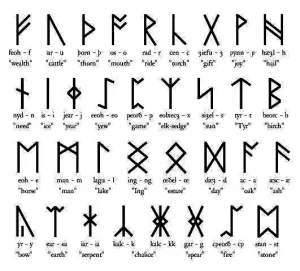
Viking God Runes
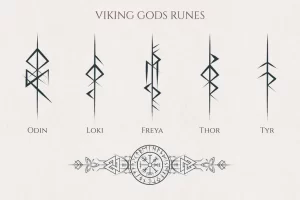
Gnostics & Mystical Symbols
In the realm of mystical traditions, the Gnostics were known for their esoteric knowledge and symbolic representations. The Gnostics believed in the existence of hidden knowledge that could liberate the soul from the material world. They used symbolic language and imagery to convey complex concepts and spiritual truths.
The Gnostics utilized various symbols, such as the ouroboros, a serpent biting its own tail, representing the cyclical nature of existence and the eternal return. Another well-known Gnostic symbol is the ichthys, or fish, which served as a secret sign of recognition among early Christians. These symbols, along with many others, were used by the Gnostics to convey their profound spiritual insights and initiate individuals into their mystical teachings.
A Brief History Of Gnosticism
Gnosticism is important to understand in the context of both Abrahamic religious traditions and the Egyptian and Greco Roman world as it spans across all of them. This is important to our topic because various Sigils, Icons and even Ideas are rooted in the ancient Greek mystery schools which Gnostics were a part of. Gnostics held many different beliefs and came in many forms, but understanding just the basics can go a long way to clarifying many icons and effigies in particular.
Gnosticism, an ancient spiritual movement shrouded in mystery, has captivated the minds of scholars and seekers alike. Rooted in the Greek word “gnosis,” meaning “knowledge,” Gnosticism emerged as a distinct religious and philosophical system in the late first century AD. While its origins have sparked much debate among scholars, the prevailing evidence suggests that Gnosticism originated within the realm of Christianity, intertwining its teachings with a unique blend of esoteric knowledge and mystical experiences. In this article, we will delve into the captivating history of Gnosticism, exploring its connections to ancient Greece, its relationship with Christianity, the reasons behind its persecution, and the distinctive aspects that set it apart.
The Origins of Gnosticism: Unveiling the Ancient Wisdom
The roots of Gnosticism trace back to the fertile ground of late first-century Christianity. While some theories propose an independent origin for Gnosticism, recent scholarship leans towards its development within the context of Christianity. The French historian Simone Pétrement argues that Gnostic theology finds its foundation in the early Christian writings attributed to the apostles Paul and John, which would later become part of the New Testament. The Gnostics, through ingenious interpretations, drew from the teachings of Paul and John to formulate their distinct Gnostic worldview. Thus, it is reasonable to conclude that Gnosticism emerged in the late first or early second century AD, influenced by its Christian surroundings.
Gnosticism and Ancient Greece: A Mysterious Connection
Although Gnosticism flourished during the early Christian era, its philosophical underpinnings can be traced back to ancient Greece. The Gnostics incorporated elements of Greek philosophy, particularly Platonism, into their unique worldview. Plato’s metaphysical ideas, such as the concept of transcendent forms and the duality of the material and immaterial realms, resonated with the Gnostics. They drew upon the idea of a flawed material world and a higher spiritual reality, aligning it with their belief in the flawed creation of the Demiurge, a false god who created the imperfect material realm. By fusing Greek philosophical concepts with their distinct Christian interpretations, the Gnostics created a sophisticated and esoteric system of thought.
Gnosticism and Christianity: A Complex Relationship
While Gnosticism emerged from within the Christian milieu, it differed significantly from mainstream Christian teachings. Gnostics held a unique understanding of salvation and the nature of the divine. They believed that salvation came not through faith or obedience to religious laws but through the attainment of gnosis, a mystical knowledge that revealed the true nature of the self and the divine. This knowledge, according to the Gnostics, was hidden from the majority of humanity and could only be obtained through direct personal experience and revelation. This emphasis on personal experience and esoteric knowledge set Gnosticism apart from orthodox Christianity, which focused on faith, obedience, and adherence to religious doctrines.
The Persecution of the Gnostics: A Clash of Beliefs
The Gnostics faced persecution and opposition from both religious and secular authorities. Their distinct beliefs challenged the established religious order, threatened the authority of the orthodox Christian hierarchy, and contradicted the dominant theological doctrines of the time. The early Christian heresiologists, such as Bishop Irenaeus of Lyons, vehemently denounced the Gnostics as heretics, as they saw their teachings as deviating from the true faith. Moreover, the Roman Empire, which relied on religious and social cohesion, viewed Gnosticism as a subversive force that undermined the stability of the state. This led to the suppression and persecution of Gnostic communities, forcing them to operate underground and preserve their teachings through secret societies.
The Unique Aspects of Gnosticism: Mysticism and Mythology
One of the distinguishing features of Gnosticism is its emphasis on mysticism and the use of mythological narratives to convey its teachings. Gnostic texts, such as the Secret Book of John and the Gospel of Thomas, often take the form of myths and allegories, employing symbolic language to communicate profound spiritual truths. These myths serve as vehicles for transmitting the Gnostic understanding of the divine, the cosmos, and the human condition. Gnostics believed that the material world was created by a flawed and ignorant deity, known as the Demiurge, who trapped divine sparks or “divine sparks” within human beings. Through gnosis, individuals could awaken these divine sparks and liberate themselves from the constraints of the material world, ultimately reuniting with the true transcendent God.
Gnosticism’s Enduring Legacy: A Journey of Spiritual Exploration
While Gnosticism faced persecution and suppression in its historical context, its ideas and teachings have had a lasting impact on religious and philosophical thought. Gnosticism’s emphasis on personal experience, direct revelation, and the pursuit of hidden knowledge resonates with individuals seeking a deeper spiritual understanding outside of traditional religious frameworks. Its fusion of Greek philosophy, Christian theology, and mystical practices continues to inspire spiritual seekers, scholars, and artists, who find in Gnosticism a rich tapestry of ideas and a pathway to explore the mysteries of the universe and the divine.
In conclusion, the history of Gnosticism reveals a fascinating interplay between ancient Greek philosophy, early Christianity, and mystical experiences. While its origins lie within the sphere of Christianity, Gnosticism developed its distinct teachings by incorporating elements of Greek philosophy, particularly Platonism. The Gnostics’ belief in the attainment of gnosis, their emphasis on personal experience, and their use of mythology set them apart from orthodox Christianity and led to their persecution by religious and secular authorities. Despite their suppression, the Gnostics left a lasting legacy, inspiring generations of seekers to explore the depths of spirituality and the mysteries of existence. Gnosticism continues to intrigue and challenge our understanding of the divine, offering a unique lens through which to explore the complexities of the human experience.
Important Gnostic Effigies and Symbols
Gnosticism is not without it’s own important symbols, chief amongst them being the tree of life, representative of the world above and below. Though explanations would differ tremendously upon the precise meaning and its correlation to the true meaning.
Gnostic Deities & Symbols
It’s very difficult to find definitive, authoritative information about many Gnostic deities and their origins. One of the oldest symbols associated with Gnosticism is Abraxas, a chicken or bird headed deity with the body of a man holding shield and a whip with legs of serpents. This is thought by some to symbolize various things. Rather than theorize incorrectly, we will leave it up to the reader to interpret these interesting, ancient symbols.
Abaraxas
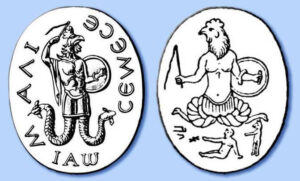
Demiurge
The Demiurge is often found associated with Abraxas and is thought to be a kind of false-God or creator deity that made the world imperfectly. Often symbolized as a snake with the head of a lion, this image has been found on metalware and in various forms dating back millennia.
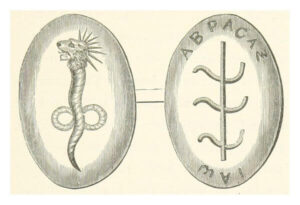
Gnostic Tree
One of the most commonly Gnostic associated symbols is that of the tree. Symbolizing an association or perhaps correlation with the lower-realm (world) and the upper realm. There is a definitive association here that crosses over into our next area of focus and interpretation – Kabbalism or Quabalah (spelled variously).
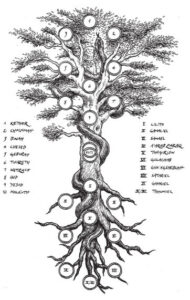
Gnostic Worldview Image
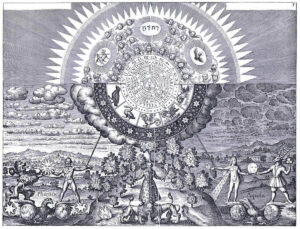
Divine Sophia – A key component of Gnosticism is the concept that the world was emanated from a flawed deity named Sophia’s offspring (The Demiurge) and that it was her sympathy upon humanity that granted the divine spark which gave humans consciousness or divine essence to transcend the world-trap (so to speak) of the demiurge.
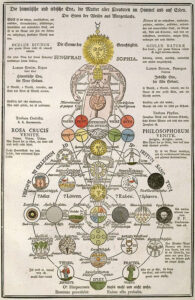
Kabbalism
No discussion of esoteric symbology can be complete without a mention of Kabbalism – also written as Cabalism, Quabbalism and numerous other variant names throughout history.
Kabbalah is a form of Jewish mysticism that is both a very important spiritual variant system of communication, symbology, worship, divination and overarching esoteric science – all in one. It is so complex and comprehensive that it is hard to easily categorize it. Yet it is the system which has played perhaps the most tremendous role of all in the esoteric roots of many different occult systems of thought and sprung from itself so many Sigils, Symbols, Icons and even Effigies that one would be hard pressed to place them into a single piece.
Kabbalism can lay claim to a lot of esoteric territory and its importance is, perhaps, so manifold that the best way to characterize it is as its own form of mysticism. Though it is indeed Jewish in its roots and no doubt Abrahamic in its teachings, it’s also methodical to the point of being scientific in its methodology and has much to say about a multitude of things.
The most important Kabbalistic symbol is the Kabbalistic Tree Of Life, a unique symbol used in the tradition to show the interconnectedness of all things, the path to spiritual enlightenment as well as emphasizing the macrocosm and microcosmic nature of reality itself. The importance of this symbol transcends Kabbalism and has been adopted (in varying forms) across numerous belief systems throughout history.
To understand the tree of life is a highly complex and nuanced subject and we’ll leave that to another piece, for now though, we will go through a rough history of how Kabbalism survived and even thrived through the dark ages and into modernity.
Kabbalah is not without its own rich history of symbology. Some might even say it has the richest symbology of all with many of it’s concepts and icons being co-opted and used in a wide variety of belief systems. Many other systems of of belief, including hermetic and solomonic magic have taken symbols from Kabbalah and incorporated them into their own systems over time – but that’s for another piece, we’ll end this section with an image of the most important Kabbalistic symbol of all, the Kabbalistic tree of life.
Kabbalistic Tree Of Life
The Renaissance Rebirth of Ancient Wisdom
In the flourishing era of the Renaissance, a profound intellectual awakening swept across Europe, igniting a fervent quest to rediscover the long-obscured ancient wisdom. This insatiable thirst for knowledge manifested itself in two distinct yet intertwined traditions: kabbalah, the esoteric mystical interpretation of Judaism, and hermeticism, a philosophical school rooted in the teachings attributed to the mythical sage Hermes Trismegistus.
Marsilio Ficino: The Catalyst of Hermetic Revival
At the vanguard of this hermetic revival stood Marsilio Ficino, a Renaissance philosopher whose pivotal role cannot be overstated. Commissioned by the illustrious Cosimo de’ Medici, Ficino embarked on an intellectual odyssey, translating the ancient Corpus Hermeticum from Greek into Latin. This monumental undertaking unveiled a treasure trove of arcane wisdom, believed to contain the primordial knowledge once bestowed upon Adam in the Garden of Eden – the prisca sapientia or “ancient wisdom.”
Ficino’s translations sparked an intellectual conflagration, rapidly disseminating the hermetic doctrines across the European intellectual landscape. Adherents of this tradition, including the archetypal Renaissance magus John Dee, embraced the notion that the Hermetic writings could unlock the profound secrets of the universe and its divine architect.
The Kabbalistic Tradition: Unveiling the Hidden Mysteries
Parallel to the hermetic resurgence, the mystical practice of kabbalah experienced a renaissance of its own. Originating in Judaism, kabbalah sought to unveil the hidden traces of the divine within the universe, offering a profound metaphysical interpretation of sacred texts and rituals.
The kabbalistic tradition, much like hermeticism, captivated the intellectual elite with its promise of unveiling the intricate workings of the cosmos and the nature of the Creator. Prominent figures, such as the English occultist John Dee, found themselves drawn to both traditions, recognizing their shared pursuit of uncovering the enigmatic mysteries that lay beyond the veil of conventional understanding.
Symbology and Iconography: The Language of the Esoteric
Both kabbalah and hermeticism employed a rich tapestry of symbolism and iconography to convey their profound teachings. The Tree of Life, a central motif in kabbalah, represented the emanations of the divine essence, depicting the intricate interconnections between the spiritual realms and the material world.
Similarly, hermetic philosophy abounded with potent symbols, such as the Emerald Tablet, believed to contain the quintessential principles of the hermetic tradition. The iconic image of the Ouroboros, a serpent devouring its own tail, symbolized the cyclical nature of existence and the eternal unity of all things.
These esoteric symbols served as gateways to deeper understanding, inviting initiates to decipher their intricate layers of meaning and unravel the profound truths they concealed.
The Magus: Seeker of Arcane Knowledge
Central to both kabbalah and hermeticism was the figure of the magus, a learned practitioner of the occult arts who sought to harness the hidden forces of nature and the universe. John Dee, the illustrious Elizabethan scholar and advisor to Queen Elizabeth I, epitomized this archetype.
Dee’s insatiable thirst for knowledge led him to delve into a myriad of esoteric disciplines, including kabbalah, hermeticism, and angel magic. His reputation as a magus was both revered and feared, as he navigated the precarious line between enlightenment and the perceived dangers of trafficking with unseen realms.
The magus, whether embraced or vilified, embodied the relentless pursuit of esoteric wisdom, a pursuit that often blurred the boundaries between the sacred and the profane.
The Modern Magus – Who Are They??
Without any pejorative context, the modern legacy of the magus lives on in the traditional understandings of what it means to be an occult Magician or Witch. Though these terms are used to denote largely the same meaning, they are traditionally bestowed only upon those who have verifiable occult knowledge.
An often cited quote in occult circles is that anyone can call a spirit but only a Magician or a Witch can actually make one show up. What does all this mean? Without going too deeply – that would call for another piece at a future time. The fact is that there is a belief amongst many (taken as an absolute fact amongst a sizable community) that there exist ceremonies and rituals to summon spirits and to have interactions – even bargains – with them.
How does this relate to symbology?
Well, earlier we examined Sigils and it is a part of these occult practices that utilize sigils associated with individual spirits to get their attention and make them show up. Sigils are not something to be taken lightly as they embody highly complex correlate associations with non-corporeal beings to whom they are ascribed.
Below are some of the common Sigils associated with several common protecting angels within the context of Solomonic Magic Rituals.
Magical Sigils
Metatrons Cube – Widely considered a magical sigil, used in many ceremonial magical settings.
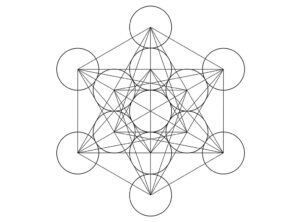
Pentacle – The pentacle has a long tradition as being both a protective symbol and as a magical sigil.
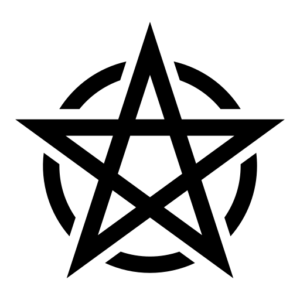
Sigil for Dissolution of Hatred (Source: Here)

Note: Many sigils exist which are associated with specific deities including demons and demonology, it is beyond the intention of our post to include sigils of this type, but merely to present an explanation of them and their usage. We apologize for those who may have wished to see more in-depth sigils presented for specific deities or evocations.
Lost Civilizations & Lost Meanings Of Symbology
The Enduring Legacy: Reverberations Through the Ages
Despite the controversies and apprehensions that surrounded them, the traditions of kabbalah and hermeticism left an indelible mark on Western thought and culture. Their influence can be traced through the centuries, resonating in the works of artists, philosophers, and scientists alike.
From the intricate symbolism of Renaissance art to the metaphysical musings of philosophers like Giordano Bruno, the esoteric currents of kabbalah and hermeticism have permeated the collective consciousness, challenging conventional boundaries and inspiring new realms of inquiry.
Even in the modern era, these ancient traditions continue to captivate seekers of knowledge, offering a gateway to the profound mysteries that lie beyond the veil of the material world, beckoning those with an insatiable thirst for the esoteric to embark on their own odysseys of self-discovery and enlightenment.
Unveiling the Enigma, Embracing the Mystery
In the grand tapestry of human intellectual endeavor, the traditions of kabbalah and hermeticism stand as enduring testaments to our species’ relentless pursuit of knowledge and understanding. These esoteric paths, though shrouded in mystery and controversy, have illuminated the depths of the human psyche, challenging us to confront the enigmas that lie beyond the boundaries of conventional wisdom.
As we navigate the complexities of the modern world, the echoes of these ancient traditions resonate within us, reminding us of the profound mysteries that await those brave enough to peer beyond the veil. Whether embraced or feared, kabbalah and hermeticism have left an indelible mark on the human experience, inviting us to unveil the enigmatic realms that lie at the intersection of the sacred and the profane, the material and the metaphysical.
Gobekli Tepe & Unknown Symbolism
It’s an old world, many – if not most – languages and cultures have been lost to time, as have their spiritual beliefs. All that often remains are their symbols, etched in stone or preserved in pottery or remnants of paintings. The true meanings in full context lost to time and a past beyond examination and understanding.
Nestled in the rolling hills of southeastern Turkey lies an archaeological site that has captivated the world’s imagination – Göbekli Tepe. This enigmatic complex, dating back over 11,000 years, has emerged as a pivotal piece in the puzzle of human history, shattering long-held beliefs about the origins of civilization. As each carefully carved stone pillar and intricate symbol is meticulously unearthed, the story of our ancestors’ spiritual and cosmological understandings comes into sharper focus.
Göbekli Tepe’s significance extends far beyond its impressive physical attributes. This ancient sanctuary, predating even the construction of Stonehenge, offers a glimpse into the sophisticated worldviews and ritual practices of our Neolithic forebears. Its symbols, carved with remarkable artistry, are windows into the symbolic language of a bygone era, a language that remains largely undeciphered but tantalizing in its potential to reveal the innermost workings of the human mind at the dawn of civilization.
In this comprehensive exploration, we will delve into the captivating mysteries of Göbekli Tepe, unraveling the secrets hidden within its monumental structures and enigmatic iconography. From its staggering antiquity to the enigmatic meanings behind its symbolic repertoire, we will embark on a journey that promises to rewrite our understanding of the human journey.
The Rediscovery of an Ancient Wonder
Göbekli Tepe’s existence was first documented in the 1960s, when a team of archaeologists from the University of Chicago and the University of Istanbul conducted a survey of the region. However, the site was initially dismissed as nothing more than an abandoned medieval cemetery, its true significance obscured by the passage of time and the ravages of centuries of human activity.
It wasn’t until 1994 that the site’s true nature was revealed when German archaeologist Klaus Schmidt, working on a survey of prehistoric sites in the region, decided to investigate the stone-strewn hilltop. From the moment he laid eyes on the gently rounded summit, Schmidt recognized the site as an extraordinary relic of the Stone Age, a colossal monument that predated even the construction of Stonehenge by a staggering 6,000 years.
Architectural Marvels and the Enigma of Göbekli Tepe
The architectural wonders of Göbekli Tepe are truly awe-inspiring. Massive T-shaped limestone pillars, some standing over 16 feet tall and weighing up to 10 tons, are arranged in circular enclosures, creating a series of temple-like structures that defy our understanding of what was possible during the Neolithic period.
These pillars, meticulously carved with a variety of intricate symbols and depictions of animals, have become the site’s most iconic features. From foxes and lions to scorpions and vultures, the array of creatures adorning the stones suggests a deep reverence for the natural world and a sophisticated understanding of the interconnectedness of all living things.
Remarkably, the site appears to have been deliberately buried over time, with layer upon layer of dirt and debris covering the elaborate structures. This intentional act of concealment has led scholars to speculate on the site’s purpose, with theories ranging from a sacred burial ground to a celestial observatory used by ancient shamans.
Göbekli Tepe: A Ritual Center for Prehistoric Shamans?
One of the most compelling interpretations of Göbekli Tepe’s purpose is that it served as a ritual center for the region’s Neolithic shamans. The abundance of animal imagery, the presence of T-shaped pillars that may have represented human-animal hybrids, and the lack of evidence for permanent settlement all point to the site’s role as a sacred space where spiritual practices and cosmic contemplation took place.
Shamanism, a belief system deeply rooted in the interconnection between the human and natural worlds, is a recurring theme in the symbolism of Göbekli Tepe. The depiction of power animals, such as bears, wolves, and owls, suggests that these creatures were seen as the spiritual protectors and guides of the site’s shamanic practitioners. The presence of a “totem pole” structure further reinforces the notion of a strong shamanic tradition at Göbekli Tepe.
Moreover, the site’s potential use as a celestial observatory adds credence to the idea of its shamanic function. The careful alignment of the stone circles and the presence of symbols that may represent astronomical phenomena hint at the site’s role in the study and veneration of the heavens – a practice often associated with shamanic traditions.
Decoding the Symbolic Language of Göbekli Tepe
The intricate symbols and motifs adorning the pillars of Göbekli Tepe have become the subject of intense scholarly scrutiny, as researchers strive to unlock the secrets of this ancient symbolic language. While the precise meanings of these enigmatic carvings remain elusive, certain patterns and recurring themes have emerged that offer tantalizing clues.
One of the most intriguing symbols found at the site is the “H-shaped” and “I-shaped” motifs, which some scholars believe may represent the solstices and equinoxes, or perhaps the alternation between summer and winter seasons. The presence of the “seven birds” symbol has also been the subject of much speculation, with interpretations ranging from a representation of the seven visible planets to a symbol of cosmic harmony and the resolution of dualism.
The “diamond-like” symbol, which bears a striking resemblance to the “medicine man” symbol of Native American cultures, is another captivating feature of Göbekli Tepe’s iconography. This symbol’s potential connection to shamanic practices and the spiritual realm further reinforces the site’s role as a hub for ancient ritual and cosmological exploration.
Göbekli Tepe and the Origins of Civilization
One of the most profound implications of Göbekli Tepe’s existence is its potential to rewrite our understanding of the origins of civilization. Traditionally, scholars have believed that the development of complex societies and the construction of monumental architecture were contingent upon the advent of agriculture and the establishment of settled communities.
However, the sheer scale and sophistication of Göbekli Tepe, built long before the domestication of plants and animals, challenges this conventional wisdom. The immense effort required to carve, transport, and erect the site’s massive stone pillars suggests the presence of a highly organized and coordinated society, one that was capable of mobilizing a significant workforce and resources.
This revelation has led some researchers to propose a novel theory: that the construction of Göbekli Tepe and other similar monumental sites may have actually preceded and paved the way for the development of agriculture and settled communities in the region. In essence, the extensive planning and communal effort required to build these sacred spaces may have been the catalyst for the sociocultural changes that eventually led to the emergence of complex societies.
The Cosmic Symbolism of Göbekli Tepe
As researchers delve deeper into the mysteries of Göbekli Tepe, the site’s potential role as an ancient observatory and celestial temple has become increasingly evident. The careful alignment of the stone circles, the presence of symbols that may represent astronomical phenomena, and the site’s location atop a prominent hill all suggest a deep connection between the structures and the movements of the heavens.
The “seven birds” symbol, for instance, may represent the seven visible planets or the seven stars of the Big Dipper constellation, hinting at a sophisticated understanding of the night sky and its celestial cycles. Similarly, the “H-shaped” and “I-shaped” motifs could be linked to the solstices and equinoxes, indicating a calendrical system rooted in the observation of the sun’s annual movements.
This cosmic symbolism, combined with the site’s potential use as a ritual center for shamanic practices, suggests that Göbekli Tepe may have served as a nexus point where the earthly and the celestial realms intersected, a place where our ancestors sought to commune with the divine and unravel the mysteries of the universe.
Göbekli Tepe and the Transition to Settled Life
The implications of Göbekli Tepe’s existence extend beyond its role as a sacred site and potential astronomical observatory. The site’s location at the northern edge of the Fertile Crescent, a region renowned for its abundance of wild grains and other edible plants, has led researchers to propose a novel theory about the transition from hunter-gatherer to settled agricultural societies.
Evidence from Göbekli Tepe and nearby archaeological sites suggests that the construction and use of this monumental complex may have actually preceded the domestication of plants and animals in the region. This finding challenges the traditional narrative that the development of agriculture was a prerequisite for the emergence of complex societies and the construction of large-scale structures.
Instead, some scholars argue that the extensive effort required to build Göbekli Tepe may have been the catalyst for the transition to settled life. The need to feed and house the workforce involved in the site’s construction could have led to the gradual domestication of wild plants and the establishment of the first permanent settlements in the area.
This theory underscores the profound influence that Göbekli Tepe and similar monumental sites may have had on the course of human history, serving as the foundation upon which the foundations of civilization were laid.
The Enduring Mystery of Göbekli Tepe
Despite the wealth of information that has been uncovered about Göbekli Tepe, the site remains shrouded in mystery, with many of its secrets still waiting to be revealed. The absence of written records from the Neolithic period, the limited number of excavated structures, and the sheer scale and complexity of the site all contribute to the enduring enigma that surrounds this ancient wonder.
As archaeologists, anthropologists, and historians continue to delve into the site’s rich tapestry of symbols and structures, new insights and theories are sure to emerge, further challenging our understanding of the past and the ingenuity of our ancestors. The journey of unraveling the mysteries of Göbekli Tepe is far from over, and the potential implications of this extraordinary site for our understanding of human history and development are truly profound.
Conclusion: Göbekli Tepe and the Rewriting of the Human Story
Göbekli Tepe stands as a testament to the remarkable capabilities and spiritual sophistication of our Neolithic forebears. This ancient sanctuary, with its monumental architecture and captivating symbolic language, has the power to rewrite our understanding of the origins of civilization and the complex interplay between human societies, the natural world, and the cosmos.
As we continue to explore and decipher the enigmas of Göbekli Tepe, we are granted a rare and invaluable glimpse into the worldviews and ritual practices of our ancestors, a window into the human mind at the dawn of recorded history. The lessons we can glean from this extraordinary site have the potential to profoundly shape our understanding of our own past, present, and future, challenging us to expand the horizons of what we know and believe about the human journey.
The story of Göbekli Tepe is one of resilience, ingenuity, and the enduring human desire to comprehend the mysteries of the universe. As we unravel its secrets, we are reminded of the incredible capacity of the human spirit to create, to contemplate, and to seek connection with the divine. In this sense, Göbekli Tepe stands not only as an archaeological wonder, but as a testament to the boundless potential of the human mind and the timeless quest for understanding that has defined our species since the dawn of time.
Images of Gobekli Tepe
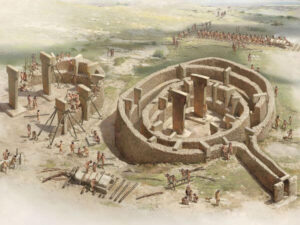
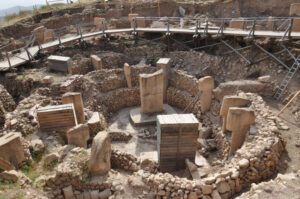
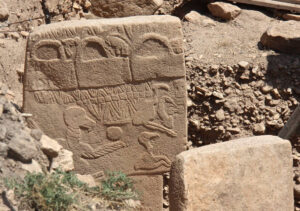

In Closing
The world of historical magic sigils, effigies, and icons is a captivating realm filled with symbolism, mystery, and ancient wisdom. Sigils serve as personal tools of manifestation, allowing individuals to tap into their inner power and manifest their desires. Effigies bridge the gap between the physical and metaphysical realms, acting as conduits for energy and intention. Icons, both in religious and magical contexts, hold deep meaning and serve as gateways to the divine. Runes and the symbols of the Gnostics offer profound insights into the esoteric knowledge of ancient civilizations.
As we explore these ancient practices and symbols, we gain a deeper understanding of the human desire to connect with the mystical and transcendental. Whether through sigils, effigies, icons, runes, or Gnostic symbols, these historical magical tools continue to intrigue and inspire us, reminding us of the profound connections between the physical and spiritual realms. So, embrace the magic of the past and let these symbols unlock the secrets of your own personal journey.
In the next part of this ongoing series we will examine physical objects, including Crystals, Talisman and other physically created Sacramental and Spiritual objects whose goals, objectives and supernatural meanings and correlations continue to captivate and interest us today just as they have since the dawn of their existence.
Subscribe and comment below. Let us know what you think of this piece and tell us – do you think anything else should have been included? If so – what is it? We would love to hear your feedback and start a conversation with you about this most interesting topic.
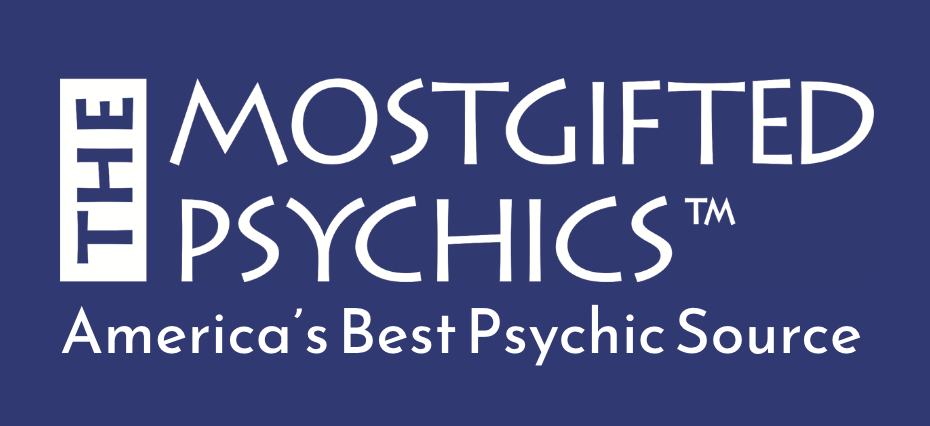

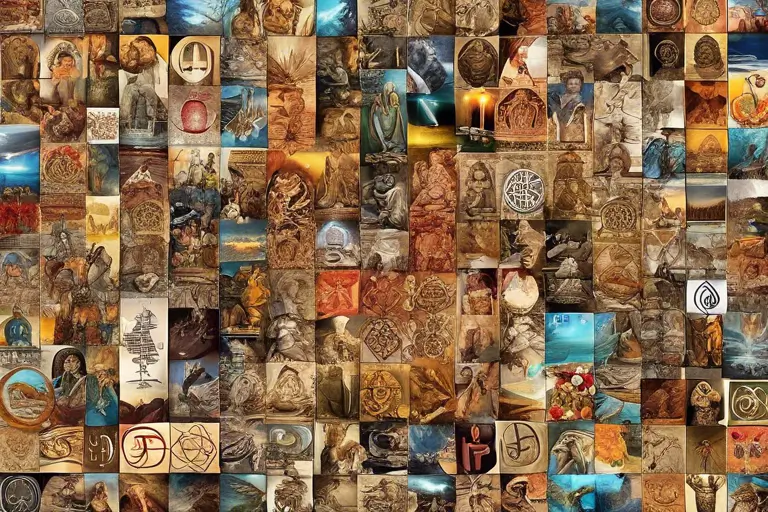

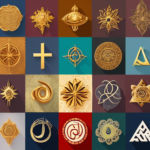
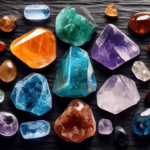
1 Comment
Felix
I like how well-written and informative your content is. You have actually given us, your readers, brilliant information and not just filled up your blog with flowery texts like many blogs today do.